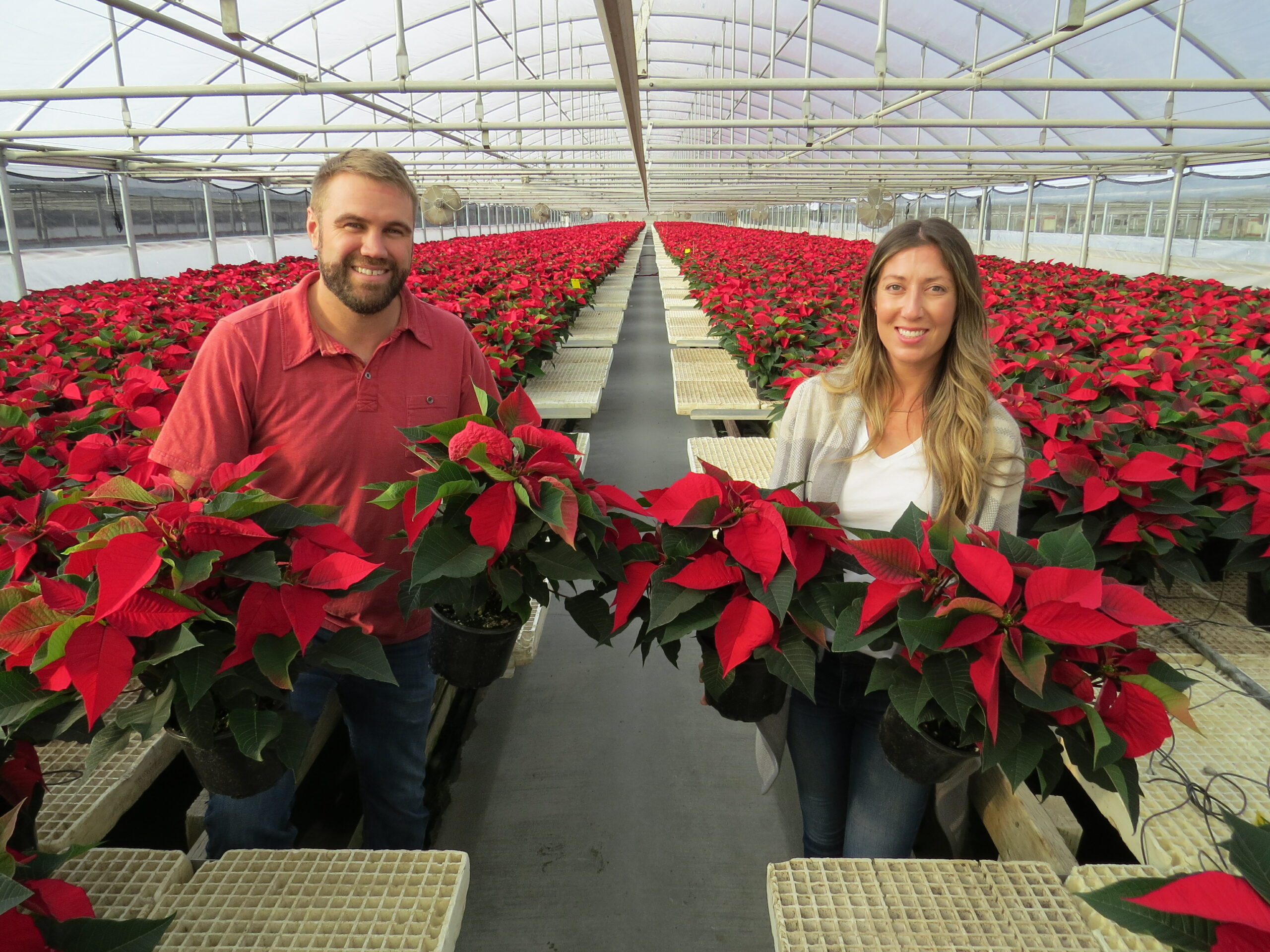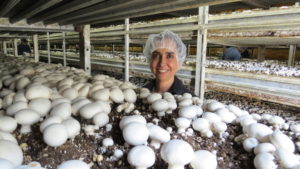Nursery crops and mushrooms head the list of top farm products
![]()

Headstart Nursery in GIlroy grows Pointsettias for the holidays. Photo by Marty Cheek
By Marty Cheek
Although it’s known worldwide for its tech industry, Silicon Valley still has a farm heritage with ranches and cropland throughout Santa Clara County. The value of the county’s agricultural products rose last year to nearly $340 million, with nursery crops and mushrooms at the top of farm products.

Morgan Hill Life file photo Mushrooms are second at the top of the list of 2021 farm products, said a recent county report.
Released in late August by the county’s Division of Agriculture, the 2021 Crop Report provides an encouraging snapshot of the region’s diverse agriculture industry and underscores the importance of farmland and rangeland to the sustainability and well-being of Silicon Valley.
The county’s farm industry is in a state of transition, as seen by some of the results in the report, said Erin Gil, co-owner of sod grower The Grass Farm, who serves as the president of the Santa Clara County Farm Bureau.
“One of the things people need to understand is the local micro-climate in terms of what you can and can’t do,” he said. “There’s certain things you can grow in this area. What’s noticeably missing in the report is the stone crops that Andy Mariani produces.”
 Gill describes how the county was once world famous as the Valley of Heart’s Delight because it was covered with prune, apricots and cherry orchards. Andy’s Orchard located in north Morgan Hill is one of the rare county farms that grows stone fruit and of a high-end heritage quality.
Gill describes how the county was once world famous as the Valley of Heart’s Delight because it was covered with prune, apricots and cherry orchards. Andy’s Orchard located in north Morgan Hill is one of the rare county farms that grows stone fruit and of a high-end heritage quality.
“You don’t see that anymore. You see different things coming through. Some of that has to do with foods going out of phase of favor,” Gill said. “You don’t see the prunes as much.”
Asian vegetables jumped from No. 8 to No. 5 on the list of top produce in the county. “That’s a big jump. There’s more Asian vegetables being grown.”
He attributed this to growers taking over the old flower greenhouses and hand-raising these vegetables (such as bok choy) to take up to San Francisco at a higher price as specialty veggies.
Overall, the value of Santa Clara County’s agricultural products rose 5.7 percent from 2020 to nearly $340 million in 2021. Nursery crops remained the most valuable crop type in the county, increasing 19 percent to $109 million in value. Nursery crops comprise a broad category that includes edible and decorative plants such as vegetable seedlings, fruit trees, bedding plants, roses and shrubs, and succulents.
Prominent in the Morgan Hill and Gilroy region, mushrooms were the second-most valuable crop in the county, up 5 percent to $79 million. The South Valley is one of the largest mushroom-growing regions in the United States, thanks in part to a favorable climate and the ability of farmers to cultivate tons of them annually on a small footprint of darkened greenhouses.
“The agriculture industry in Santa Clara County is thriving,” said Mike Wasserman, president of the Santa Clara County Board of Supervisors, who represents the South Valley. “This report tells the story of the many people who have devoted their lives to being stewards of the land — providing food, preserving a way of life, and protecting our natural open spaces.”
CLICK HERE TO READ THE 2021 SANTA CLARA COUNTY FARM REPORT
Crop statistics don’t capture the full worth of the county’s agriculture and working lands. The 2021 Crop Report highlights many other benefits of the county’s 418,466 acres of farmland and rangeland, from carbon sequestration to providing habitat for endangered species.
“Scientists and economists are getting better at quantifying the ecosystem services our working lands provide,” said Joe Deviney, the county’s agricultural commissioner. “These lands are critical for preserving and improving our quality of life for decades to come.”
Rangelands, used for grazing cattle and other livestock, are the largest land use in the county and a key component of the region’s response to climate change. The report details how the county’s 253,893 acres of rangeland improve our climate resilience, for example, by reducing the risk of wildfires.
Benefits of farmland and rangeland include:
- Wildfire protection — Grazed rangelands remove dry grass and shrubs that serve as fuel for wildfires
- Flood control — Working lands capture rain during storms, reducing storm-water runoff
- Endangered species protection — Grazing reduces nonnative grasses that compete with native plants preferred by animals like the Bay checkerspot butterfly
- Carbon sequestration — Working lands capture carbon that would otherwise be released into the atmosphere
“As the extreme effects of climate change become more apparent, the importance of rangeland is clearer than ever,” said Supervisor Otto Lee, whose District 3 contains much of the county’s rangeland. “Rangeland reduces greenhouse gas emissions while protecting us from the threats posed by our changing climate.”
Working lands, along with natural lands such as parks and open space, have become an important element of sustainability plans for communities throughout the country.
“Preserving natural and working lands is critical to reduce pollution, adapt to climate change, and meet local sustainability goals,” said Jasneet Sharma, director of the county’s office of sustainability. “They provide a range of benefits, including supporting the local economy and food system, maintaining a healthy environment and habitats, and building resilience to rising temperatures and extreme weather.”
The farm industry plays an important role in providing jobs, Gil said.
“All those valuations are increased by the economics as well by employing people or buying (ag) products,” he said. “The economic imprint of the ag community is bigger than just what the gross is.”








